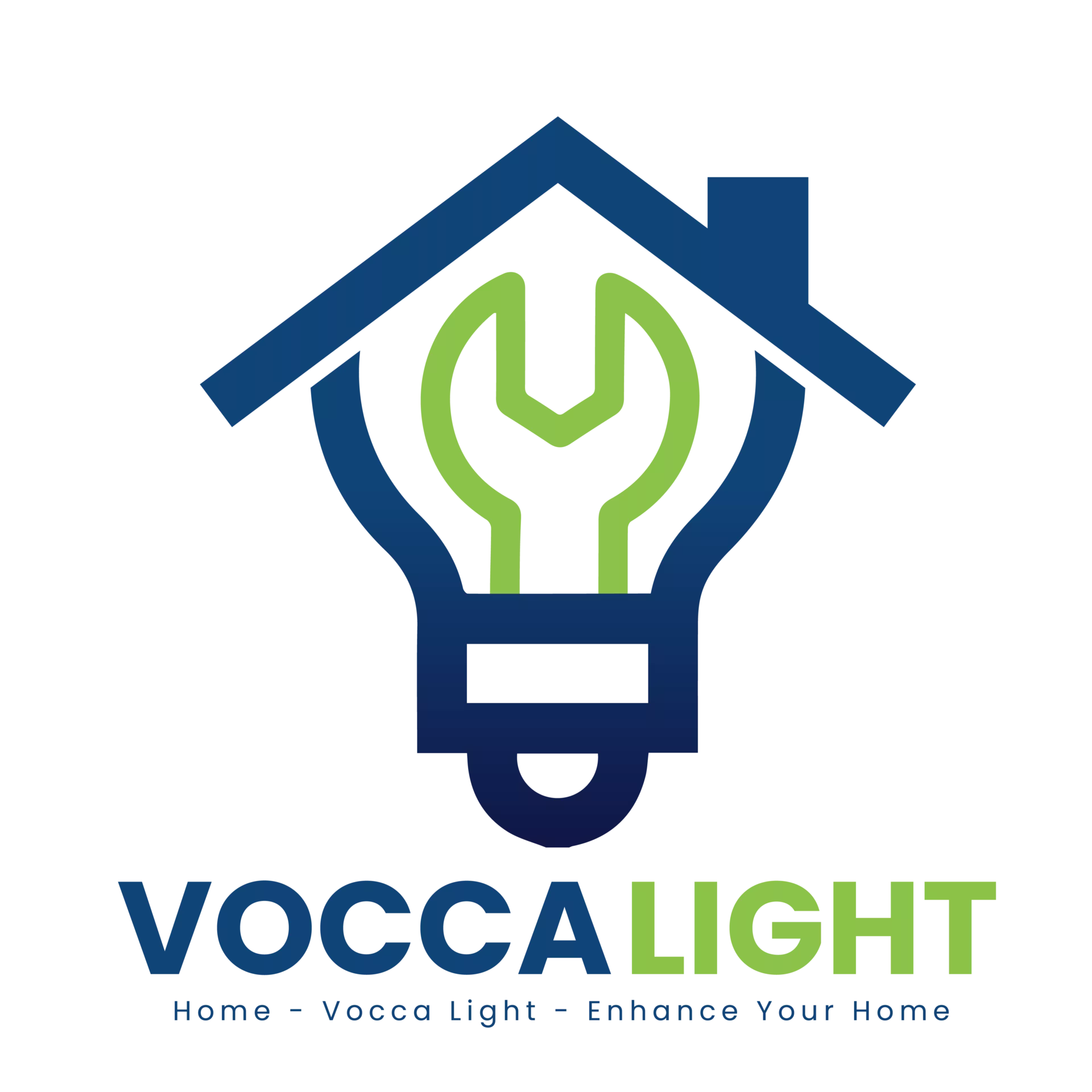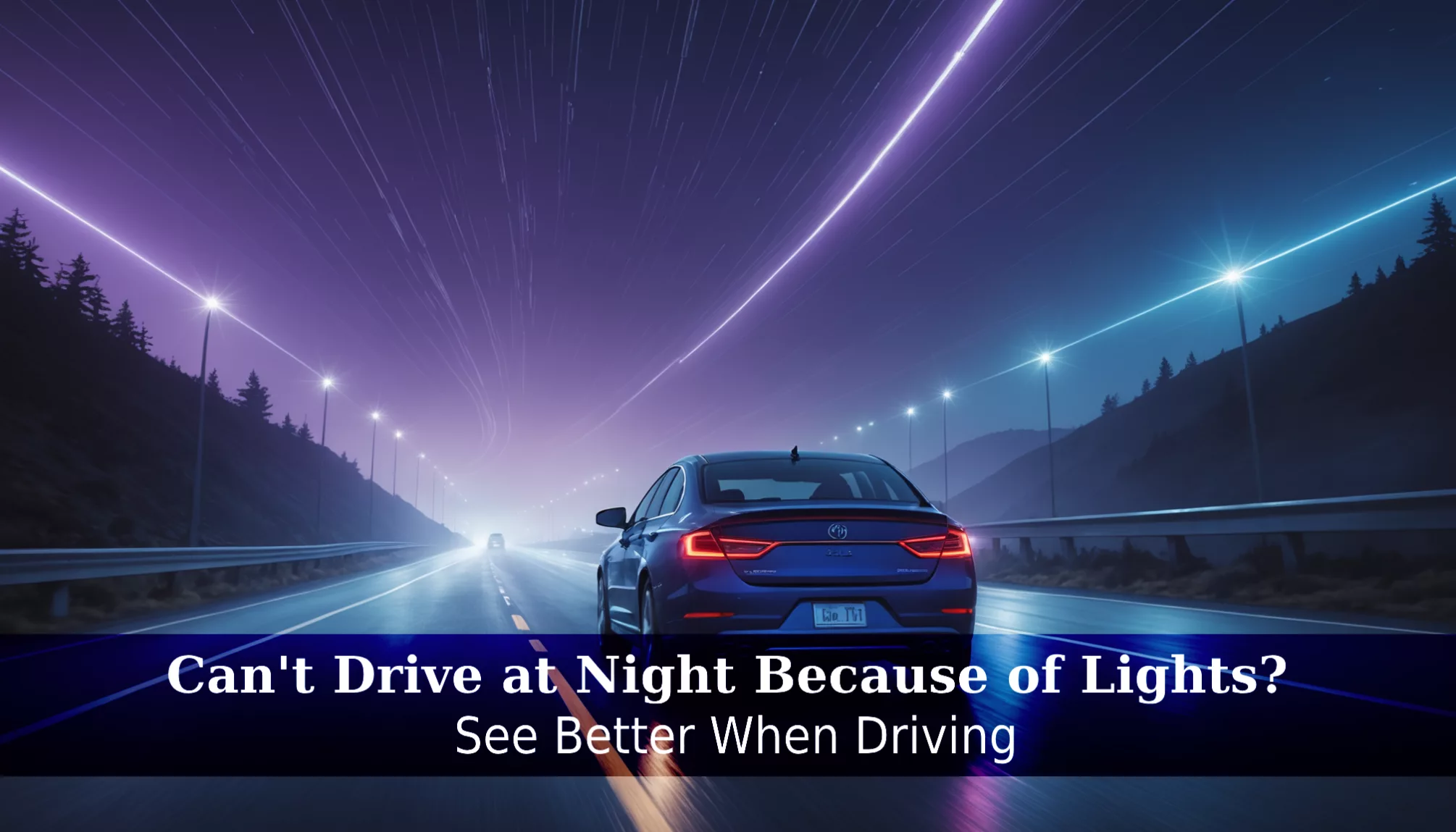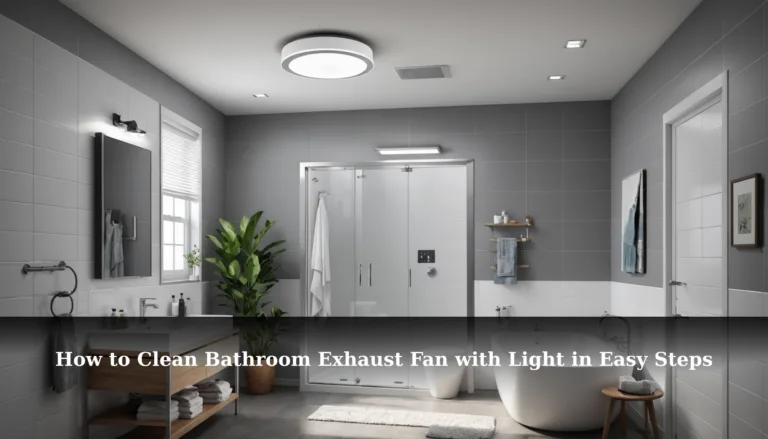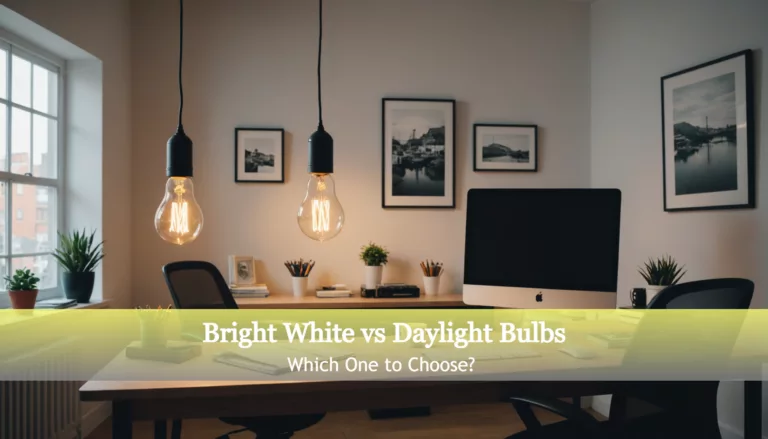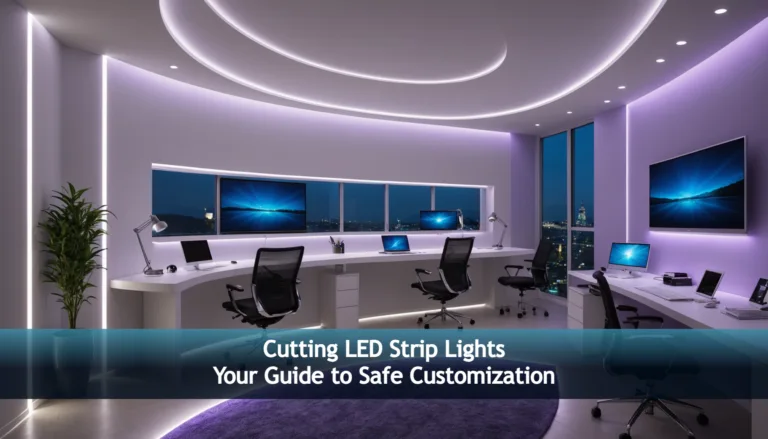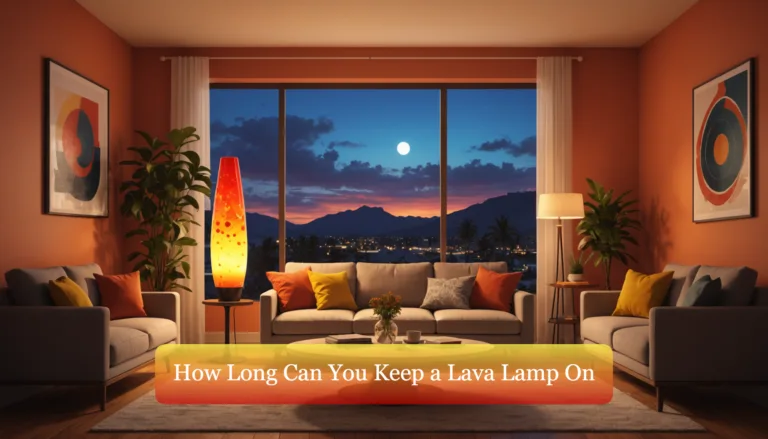Can’t Drive at Night Because of Lights? See Better When Driving
Bright headlights in your rearview mirror feel like spotlights at a concert, and you can’t drive at night because of lights making every journey feel like a challenge? You’re not alone in this frustrating situation that affects countless drivers on our roads. Modern LED headlights and streetlamps can turn a simple evening drive into an uncomfortable experience, but there are practical solutions to help you see better and drive more confidently.
In this guide, we’ll explore hands-on fixes that you can implement today to improve your nighttime driving experience. From simple adjustments to your mirrors and properly maintaining your windshield to choosing the right anti-glare solutions, we’ve got you covered with DIY-friendly tips that really work. Get ready to transform your after-dark driving experience with these expert-tested techniques that will help you handle those challenging bright lights with confidence.
Why You Can’t Drive at Night Because of Lights
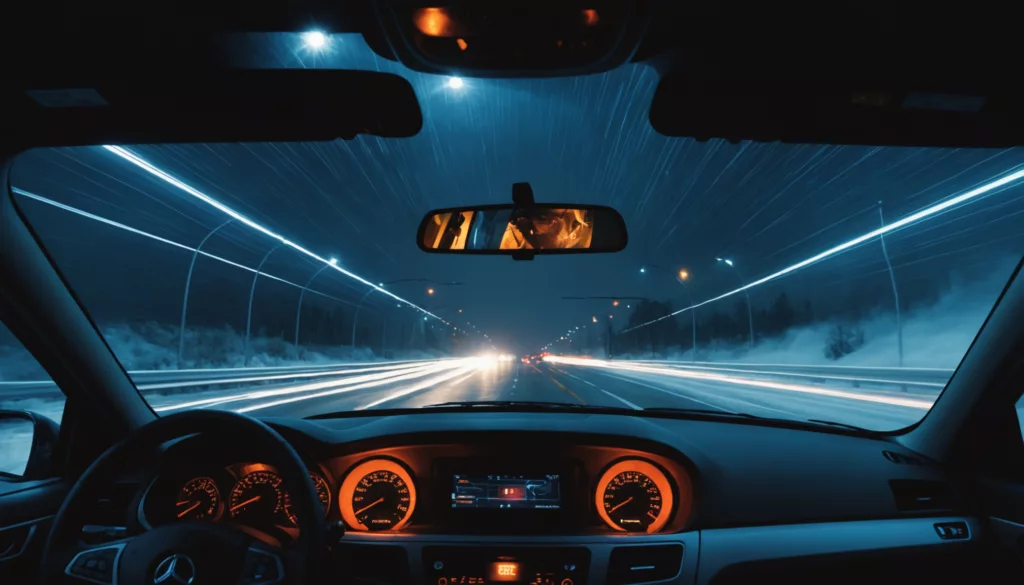
You may feel uneasy if you can’t drive at night because of lights. Bright headlights and streetlights can stress your eyes and affect your vision. These intense beams often cause glare that makes it harder to see clearly on the road.
According to American Academy of Ophthalmology, glare from headlights and streetlights can reduce your reaction time and lead to more driving risks. Reduced visibility can raise your chances of on-road incidents.
Understanding Common Causes of Night Vision Problems
You might experience night blindness (nyctalopia) because your eyes have trouble adjusting between bright and dark settings. Underlying eye conditions such as cataract or glaucoma can damage how your eyes process light. Factors like aging lenses and decreased contrast sensitivity also make it harder to see at night.
- Increased glare sensitivity from oncoming headlights
- Slower pupil response in low-light conditions
- Reduced contrast sensitivity, making signs and road markings harder to detect
- Difficulty judging distance when lights are too bright
National Eye Institute notes that conditions like vitamin A deficiency and myopia may worsen nighttime vision problems. A comprehensive eye exam can help identify the underlying cause before it affects your driving.
How Age and Health Conditions Affect Night Driving
Your eyes require more light as you age. After 50, your pupil tends to shrink, and your lens becomes less clear. These changes make it easier for oncoming headlights to cause glare that slows your ability to see at night.
| Condition | Impact on Night Vision |
|---|---|
| Cataracts | Light scatter and glare |
| Diabetes | Slower dark adaptation |
| Vitamin A Deficiency | Reduced ability to see at night |
| Glaucoma | Restricted peripheral vision |
Some medications also affect your vision in dimly lit areas. If you’re having trouble in darkness, an optometrist can help determine if changes in your prescription or other treatments might reduce glare from headlights.
Impact of Modern LED and High-Intensity Headlights
LED and HID headlights emit strong blue-white beams that many drivers find uncomfortable. The brightness of headlights on SUVs or trucks sits higher, shining directly into your eyes and causing more glare. This effect often leads to longer recovery time when you face oncoming headlights and streetlights.
- Increased brightness amplifying glare
- Eye strain from intense blue light wavelengths
- Prolonged difficulty seeing after exposure to bright lights
- Possible need for anti-glare or anti-reflective coating on new glasses
Proper vehicle maintenance—like clean windshields and well-aligned headlamps—can help prevent harsh reflections. Keeping your dashboard lights dim around busy roads may also make it easier to see.
How to See Better When Driving at Night
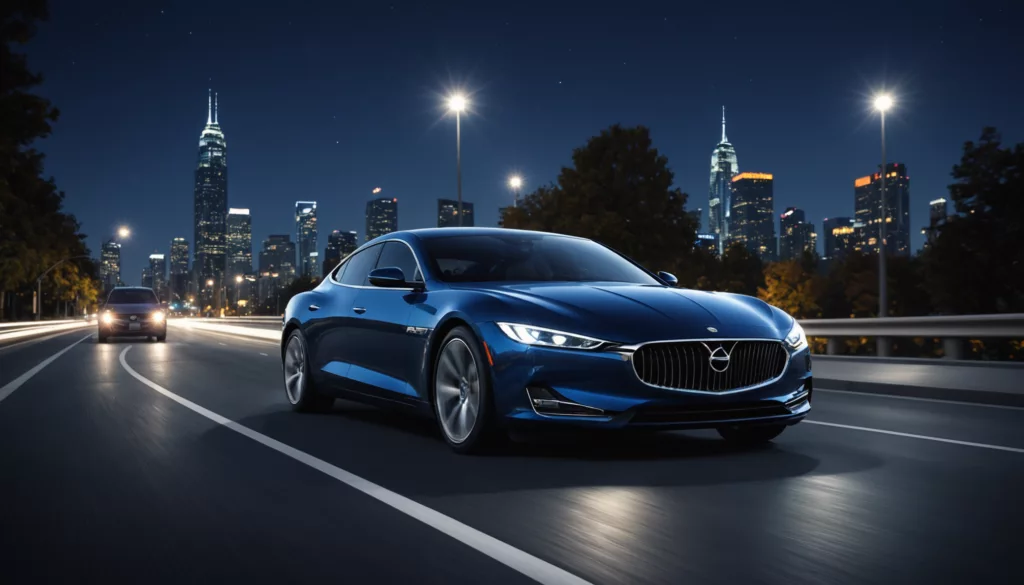
If you can’t drive at night because of lights, it’s important to know how to make it easier to see in low-light conditions. Night blindness may stem from underlying eye conditions like myopia, cataracts, or glaucoma. A comprehensive eye exam helps determine the cause of your night blindness, so you can reduce glare from headlights and streetlights.
Practical Tips for Improved Night Vision While Driving
Adjust your interior settings to avoid extra brightness from dashboard lights. Keep mirrors and windows clean to prevent reflections and eye strain. When facing oncoming headlights, focus on road markings to see clearly.
Modify driving habits by scanning the road ahead and staying aware of movement on the sides. Increase following distance to minimize the impact of bright lights. These simple changes help minimize difficulties with night driving.
Essential Vehicle Maintenance for Better Visibility
Regular vehicle care preserves your ability to see at night and prevents damage to important parts. Keep headlights and streetlights in mind by cleaning your headlight lenses and checking alignment. Replace wiper blades and keep windshield wipers in good shape to avoid smears or glare from headlights.
| Component | Maintenance Task | Frequency |
|---|---|---|
| Headlights | Clean lenses | Monthly |
| Bulbs | Check function | Every 2 months |
| Alignment | Professional check | Yearly |
| Wipers | Replace blades | 6–12 months |
Advanced Technology Solutions for Night Driving
Advanced features like anti-glare or anti-reflective (AR) coating on new glasses can reduce glare at night. Automatic headlights with adaptive beam position improve night vision at first by adjusting brightness of headlights to fit driving conditions. Night vision systems, which use infrared cameras, can also detect pedestrians and road hazards more easily. Make sure these systems receive regular updates and inspection by a qualified specialist.
Exploring Conditions That Affect Your Ability to Drive at Night
You may feel anxious if you can’t drive at night because of lights from oncoming cars. Glare and dim surroundings often make it harder to see clearly, especially if you’re experiencing underlying eye conditions.
Medical Conditions Affecting Night Vision
Cataracts cause cloudy spots in your natural lens and lead to glare when headlights and streetlights shine in your eyes. They remain a main symptom of night blindness for many older adults and can progress slowly over time. This condition worsens your ability to see dashboard lights during nighttime driving. Additionally, age-related macular degeneration (AMD) affects your central vision and makes it harder to adapt from bright to dark settings. Glaucoma often reduces peripheral vision, so you may miss objects on the sides of the road or struggle to detect movement in darker conditions.
| Condition | Main Symptoms | Impact on Night Driving |
|---|---|---|
| Cataracts | Clouded lens | Intense glare from headlights |
| AMD | Central vision loss | Slower adaptation to darkness |
| Glaucoma | Peripheral vision loss | Reduced side awareness |
Identifying Risk Factors for Night Blindness
Night blindness may develop from age-related changes, including smaller pupils and a naturally yellowing lens. Vitamin A deficiency causes night blindness by affecting the rod cells in your retina. Bright lights during the day without proper eye protection can lead to long-term damage and make it harder to see at night.
Professional Treatment Options Available
Modern care offers anti-reflective coating on glasses to reduce glare from headlights. Cataract surgery is typically recommended if cloudy lenses affect your ability to see at night. A comprehensive eye exam helps identify the underlying cause of your night blindness, and an optometrist can help you develop a treatment plan. Regular visits also provide preventive measures, such as early detection of glaucoma or myopia, to keep your vision strong at night. Prompt treatment can improve safety when driving in dimly lit areas.
Expert Recommendations for Better Night Driving
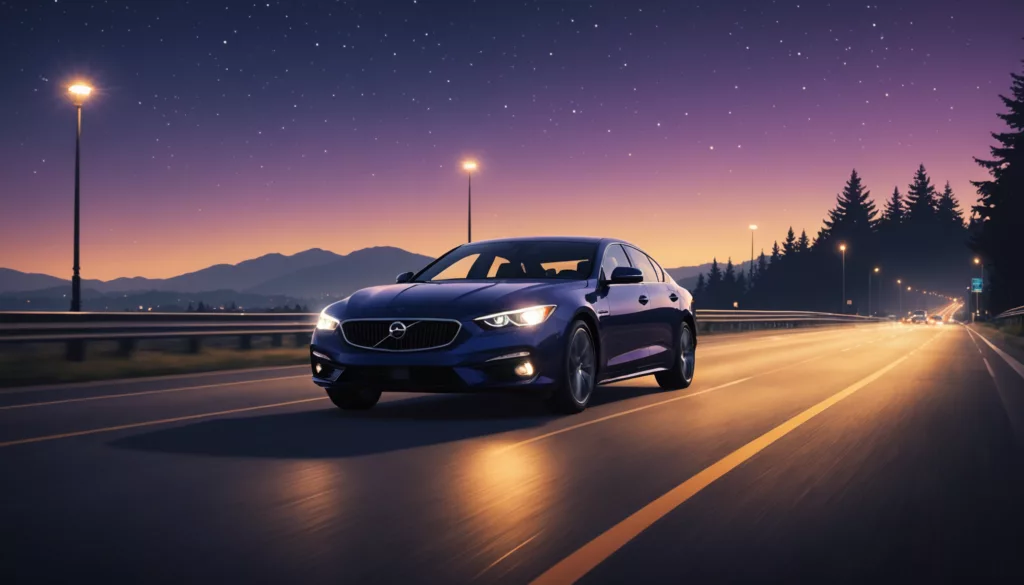
Professional Eye Care Assessments and Solutions
Regular comprehensive eye exams help if you can’t drive at night because of lights. You benefit from tests that assess night vision under dim conditions, which detect causes of night blindness early. These evaluations include a dilated exam, visual acuity check, contrast sensitivity test, and glare recovery measurement. You should schedule regular checkups to identify any underlying eye conditions.
Medical recommendations often include updated prescriptions and anti-reflective coatings that reduce glare from headlights. Special night driving eyewear may also address difficulty seeing at night. Removing cataracts or treating glaucoma can further improve your ability to see at night. Prompt attention to vision changes to prevent more severe night driving complications.
Selecting the Right Eye Protection Equipment
Certain equipment makes it easier to see in dimly lit areas. Anti-reflective coatings and yellow-tinted lenses often reduce glare and help with nighttime vision problems. Night driving glasses vary in effectiveness but may suit occasional drivers who find dashboard lights distracting or have myopia. Choose from polarized sunglasses for daytime or special night vision enhancements, depending on your driving environment.
| Equipment Type | Benefits | Best For | Considerations |
|---|---|---|---|
| Anti-reflective coatings | Reduce glare, improve clarity | Prescription lens wearers | Requires professional application |
| Yellow-tinted lenses | Enhance contrast in low-light | Frequent night drivers | May alter color perception |
| Night driving glasses | Decrease headlight glare | Occasional night trips | Effectiveness varies |
When to Seek Immediate Medical Attention
It’s important to contact an optometrist if nighttime vision worsens quickly. Warning signs include sudden halos around bright lights, progressive vision loss, or persistent glare from oncoming headlights and streetlights. Seek help if you’re experiencing severe glare sensitivity or near-miss incidents on busy roads. Swift diagnosis and treatment plan adjustments safeguard your ability to see clearly, even if you feel it’s getting harder to see at night.
Long-Term Considerations for Driving Safety at Night
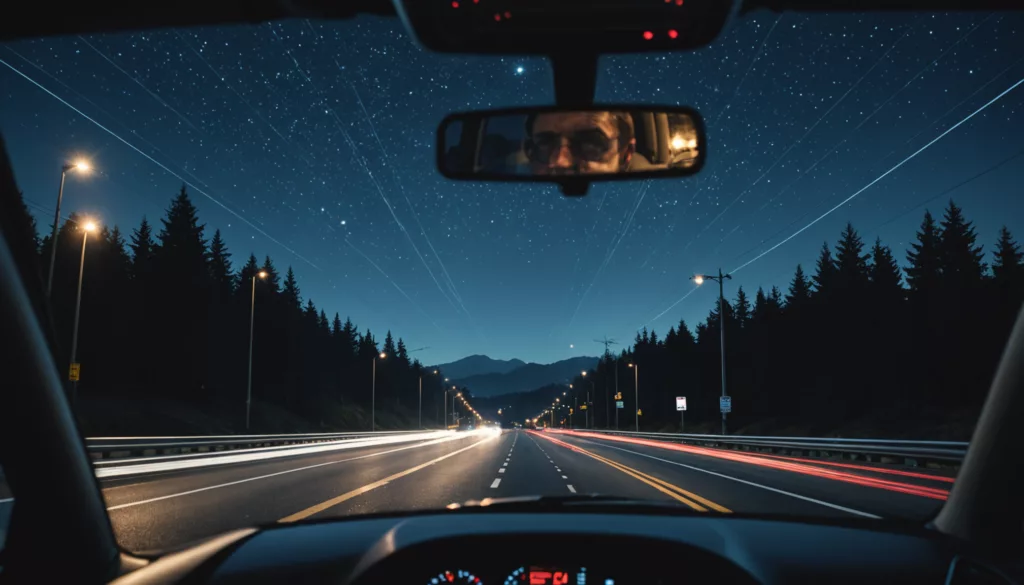
Preventive Eye Care Measures and Regular Check-ups
You can maintain better night vision by scheduling a comprehensive eye exam once a year. This step is essential if you can’t drive at night because of lights or if you’re having trouble seeing details in dimly lit areas. It’s important to monitor conditions like cataract and glaucoma that are common causes of night blindness.
An optometrist can help detect vision loss early and determine if anti-reflective coating or new glasses make it easier to see against bright headlights and streetlights. You should also clean your eyewear regularly and keep a record of any changes.
Latest Developments in Night Vision Technology
Modern alternatives help reduce glare from headlights and oncoming vehicles so you experience fewer difficulties with night driving. Adaptive headlight systems shift beam position based on steering and road conditions, while anti-glare or anti-reflective (AR) coatings lower the brightness of headlights coming your way.
Smart contact lenses under clinical development may eventually help you see clearly in darker conditions. Night vision displays also assist in detecting road hazards when normal headlights don’t provide enough light. Many newer vehicles offer these features to address underlying eye conditions and improve your ability to see at night.
Lifestyle Changes to Support Better Night Vision
You protect your eyes when you add more vitamin A, such as carrots or leafy greens, to your diet. Adequate sleep, stable blood sugar levels, and regular exercise can also prevent damage to the retina and reduce difficulty seeing. If smoking is part of your daily activity, quitting may improve your night vision and help fight off infections in the eye. You might also consider limiting alcohol before driving to avoid extra safety risks on roads with street lighting.
Additional Resources and Support
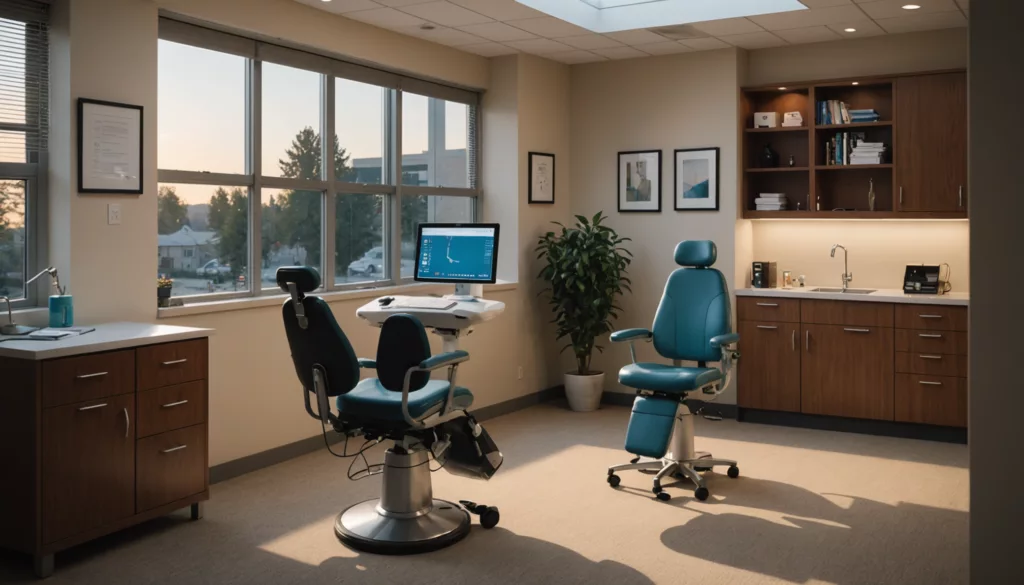
Finding a Qualified Eye Care Professional
If you can’t drive at night because of lights, you may benefit from a thorough eye exam. You can verify credentials for both optometrists and ophthalmologists through the American Board of Ophthalmology, the American Optometric Association, or your state medical board. Optometrists offer routine vision tests and basic eye care, while ophthalmologists provide medical treatments and surgeries for conditions such as glaucoma or cataracts. Both specialists help you address nighttime vision problems like nyctalopia and support your ability to see clearly.
| Professional Type | Primary Focus | When to Consult |
|---|---|---|
| Optometrist | Vision testing, basic eye care | Routine check-ups, new glasses, mild eye issues |
| Ophthalmologist | Medical eye care, surgical services | Severe or complex conditions like night blindness, cataracts, or glaucoma |
Insurance Coverage for Vision Care
Most insurance plans cover medically necessary eye exams, so check with your provider for specific details. Medicare Part B offers coverage for diagnostic exams related to night blindness, annual glaucoma screenings for high-risk groups, and certain treatments for advanced conditions. You may need pre-authorization or a referral, depending on your plan. Reviewing these requirements ahead of time helps you avoid surprises and ensures treatment is easier to see through financially.
Support Groups and Community Resources
If you can’t drive at night because of lights, you may find extra help through national and local support channels. Organizations like Prevent Blindness America, the Foundation Fighting Blindness, and the American Foundation for the Blind share educational materials, connect you with peers, and offer the latest research.
Many eye care centers and hospital networks also host groups that guide you in reducing glare from headlights and other night driving issues. These resources often include tips for managing glare, discovering new treatments, and maintaining your independence
Conclusion
Driving at night doesn’t have to be a struggle when you’re equipped with the right knowledge and tools. Regular eye check-ups, proper vehicle maintenance, and using the right protective equipment can make a significant difference in your ability to see clearly after dark. Taking proactive steps to address night vision challenges is key to staying safe on the road.
Whether you’re dealing with glare from headlights or general difficulty seeing in low-light conditions, there are practical solutions available. From anti-glare coatings on your glasses to adjusting your driving habits, these strategies can help you navigate nighttime driving with greater confidence. Remember, your eye doctor is your best partner in finding the right combination of solutions for your specific needs, so don’t hesitate to schedule regular check-ups to maintain your nighttime driving ability.
FAQs
1. Why do new headlights appear brighter than old ones?
Modern LED lamps can create intense glare, especially if you’re over 40 and experiencing natural changes in your vision.
2. When should you get a comprehensive eye exam for night vision problems?
You should get a comprehensive eye exam if you’re experiencing difficulty seeing clearly at night, especially if headlights and streetlights feel extra bright (Visionaryeyecentre). This could be due to natural changes in vision, or underlying eye conditions like cataracts, myopia, or glaucoma.
3. What causes light sensitivity, and how can you reduce glare from headlights?
Light sensitivity can be caused by a variety of factors, including the intensity of modern LED headlights, natural vision changes with age, and underlying eye conditions. Glare can be reduced through several methods, including anti-reflective coatings on glasses, night driving glasses, cleaning your windshield and mirrors, adjusting mirrors to reduce brightness, and using anti-glare or anti-reflective (AR) coating for added clarity on your glasses.
4. What are some treatment options for night vision problems and their costs?
| Treatment | Cost Range | Benefits |
|---|---|---|
| Anti-reflective coating | $50-150 | Less glare, clearer vision |
| Night driving glasses | $20-100 | Filters blue light |
| Prescription updates | Insurance-dependent | Corrects vision problems |
| Regular eye exams | $50-200 | Detects conditions early |
| Medical interventions | Varies | May include cataract surgery, vitamin A supplements, or new glasses |
5. What are some prevention and management strategies for night vision problems?
Simple habits can make it easier to see at night and prevent further vision loss. These include:
- Cleaning your windshield and mirrors weekly.
- Replacing worn windshield wipers.
- Adjusting your mirrors to reduce oncoming brightness.
- Scheduling regular eye checkups.
- Scanning the road carefully.
- Keeping speed moderate in darker conditions.
- Increasing distance from the car ahead.
- Using anti-glare or anti-reflective (AR) coating on glasses.
